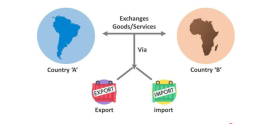
How to Use Your Website to Promote Animal Rights
In a world increasingly united by technology and digital communication, your website can be a powerful tool for advocating for animal rights. Whether you’re a seasoned activist or just starting to dip your toes into the cause, having a platform to raise awareness, share stories, and mobilize support is essential. Here’s how you can turn your website into a beacon of hope for our furry and feathered friends.
Start with a Strong Foundation
The first step in promoting animal rights through your website is creating a strong foundation. It’s like building a house; if your base isn’t solid, everything else might crumble. Choose a reliable hosting service that’s easy to use and can handle your growing audience. I remember when I started my animal rights blog; I went with DarazHost. They offered me everything from excellent uptime to user-friendly features that let me focus on my content rather than tech headaches.
Designing for Impact
Think about the layout and design of your website. You want visitors to feel welcome, inspired, and compelled to take action when they land on your page. Here are some design tips that can make a difference:
- Use Eye-Catching Images: Visuals can make or break your message. Use heartwarming photos of animals and compelling graphics to draw visitors in.
- Keep It Simple: A clean website layout makes your content more accessible. Don’t clutter your site with too much information at once; guide your readers with clear navigation.
- Incorporate Storytelling: Share personal anecdotes about animals you’ve rescued or met. Connecting on a personal level can have a profound impact on your audience.
Creating Engaging Content
Your website will only be as effective as the content you populate it with. Think of it as your soapbox—the more engaging your content, the more attention you’ll grab. Here are some ideas to get your gears turning:
Blog About Animal Rights Issues
Write about current events related to animal welfare. For instance, is there a new legislative initiative affecting animal rights in your area? Did you come across a heartwarming rescue story? Sharing these topics can inform your readers while igniting discussions.
Feature Success Stories
People love stories! Create a section for success stories of rescued animals. Perhaps you even have a sidekick who inspired you—like my old rescue dog, Max, who transformed my life and the lives of countless others. Share how specific organizations have made a difference in individual animals’ lives.
Mobilizing Your Audience
Having a website filled with excellent content is fantastic, but what’s the point if you’re not mobilizing your audience? It’s time to turn those page views into action!
Call to Action
Include clear calls to action (CTAs) on your site. This could be anything from signing a petition, donating to a local shelter, or participating in a campaign. For instance:
- Petition Signatures: Make it easy to sign and share petitions related to animal rights.
- Donation Links: Collaborate with local shelters and provide links that lead directly to donation pages.
- Events Calendar: Host a calendar of local events where supporters can join rallies, volunteer, or organize fundraisers.
Building a Community
A website is more than just a collection of pages; it’s a place to foster community. Engaging with your audience can create a loyal following who will help spread your message. Below are some ways to cultivate that sense of community:
Comments and Feedback
Encourage comments on your blog posts. Always respond to feedback and engage with your audience. This dialogue will not only strengthen relationships but also provide you with insights about what resonates with your readers.
Social Media Integration
Utilize the power of social media to extend your reach. After all, sharing is caring! Embed social media buttons to encourage sharing your posts. Frequently post snippets from your site to platforms like Instagram and Facebook to capture a broader audience—and remind them what’s at stake!
Staying Informed and Updated
It’s vital to stay updated with trends and laws surrounding animal rights. Start a newsletter section on your website where subscribers can receive regular updates. This not only spreads information but also keeps your audience engaged.
Curated Content
Share curated content from other credible websites or organizations. You don’t always have to reinvent the wheel! This not only builds your site’s credibility but also showcases your commitment to the cause.
Conclusion: Every Click Counts
Your website is an incredible platform to promote animal rights and make a genuine difference. By creating engaging content, mobilizing support, and fostering community, you can turn your corner of the internet into a loud and proud advocate for our beloved animals. Remember, every click counts; every visitor has the potential to become a passionate supporter. So let’s get to work and make caring for animals not just a cause but a movement.
FAQs
What should I focus on when writing my content?
Write about issues you are passionate about. Share personal stories, include statistics, and inspire your readers with a call to action.
How can I attract more visitors to my website?
Utilize social media and collaborate with other organizations. SEO strategies tailored to animal rights topics will help you reach more concerned individuals.
What’s the best way to engage with my audience?
Be responsive to comments and feedback, and consider creating a community forum or social media group where like-minded individuals can connect.
Now go on, tap into your creativity and let your passion for animal rights shine through your website! Together, we can make waves in the pursuit of a kinder world for all living beings.









